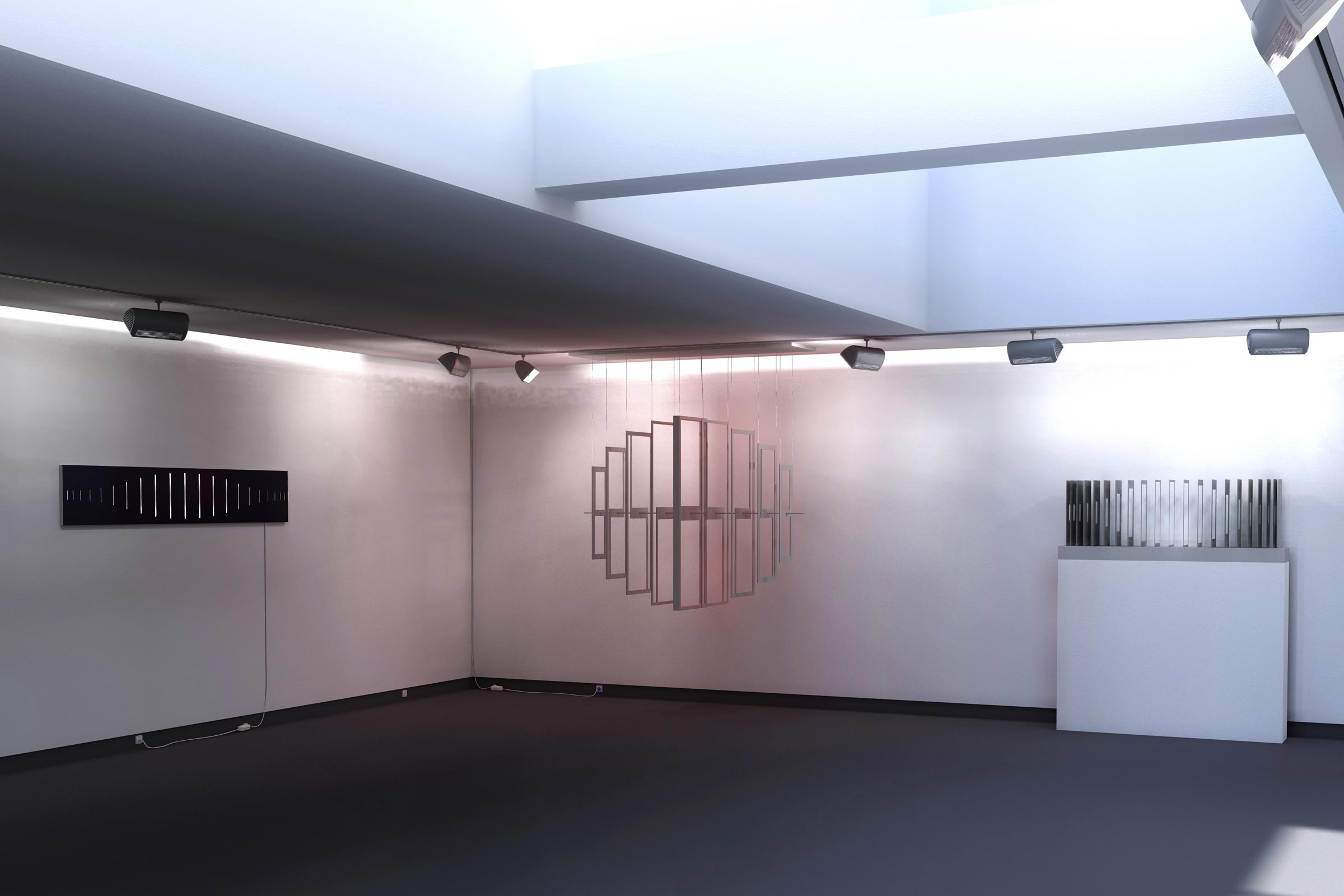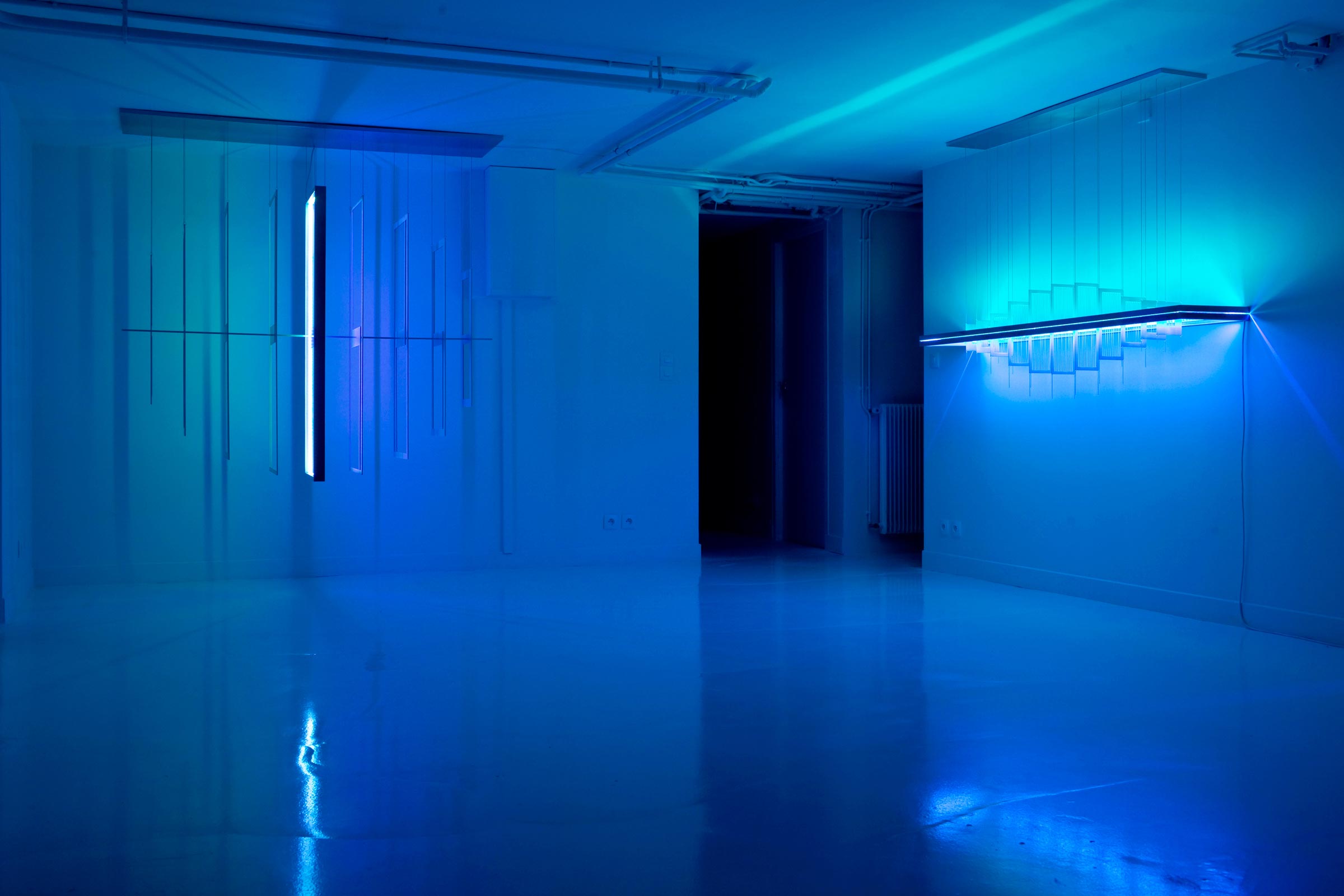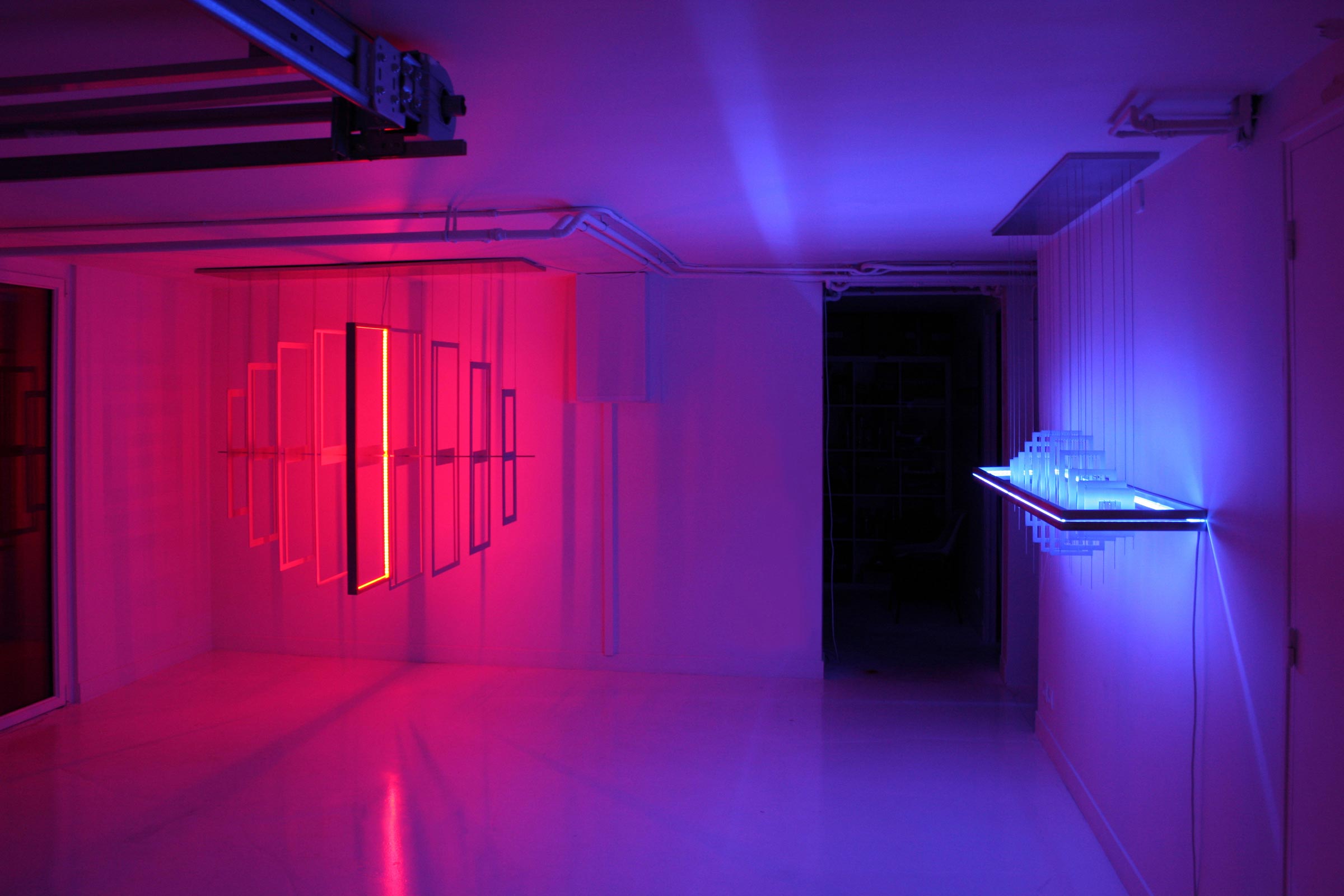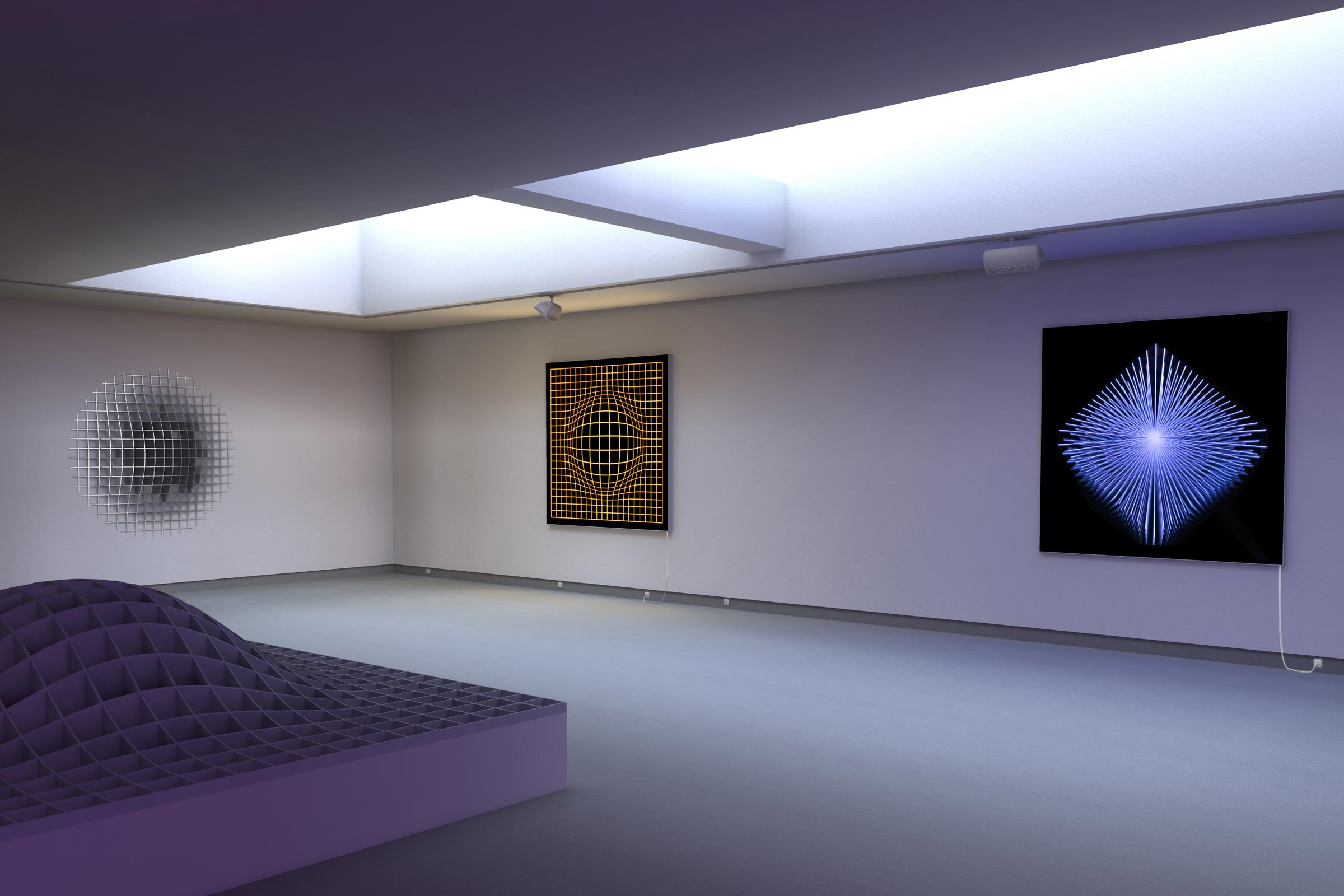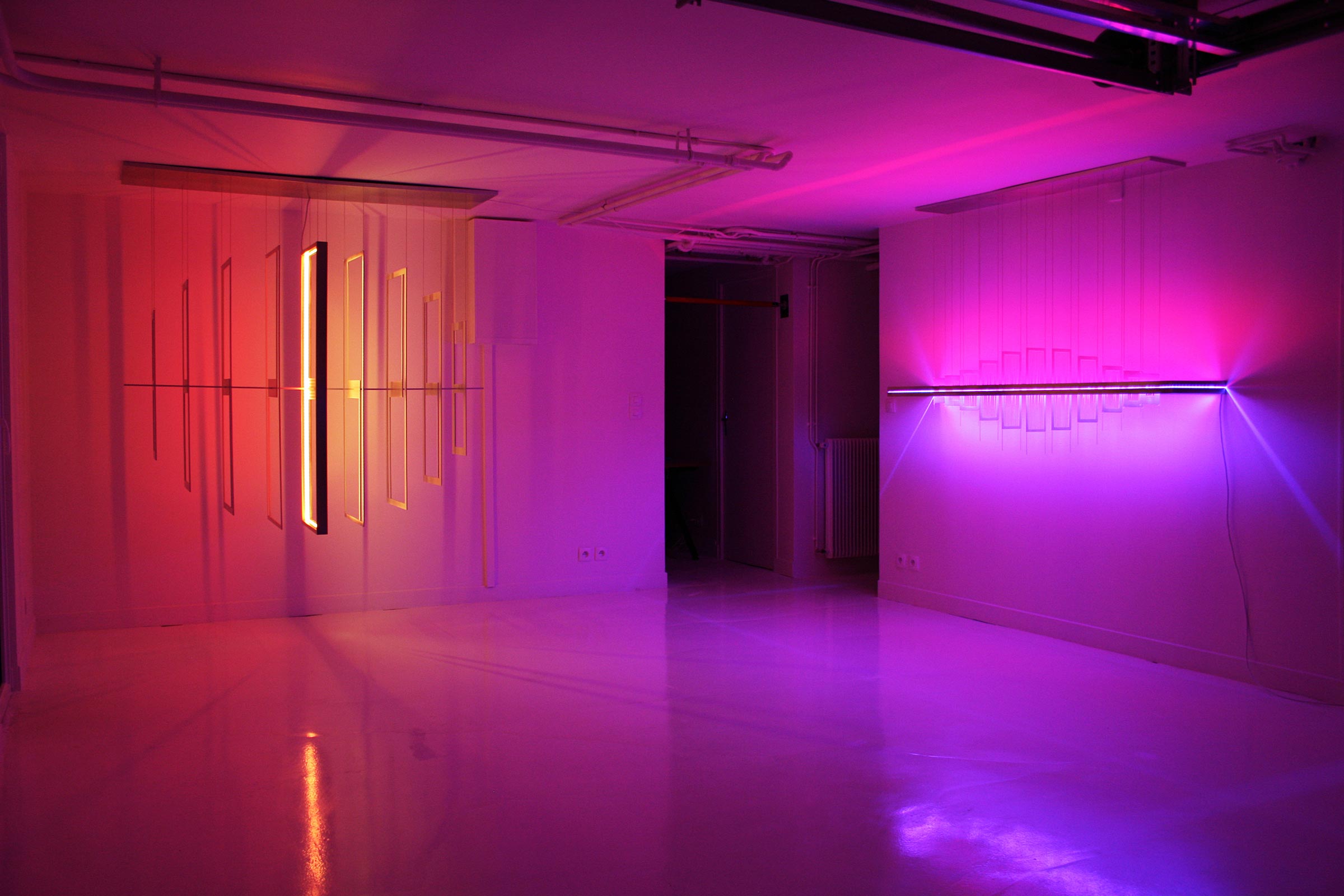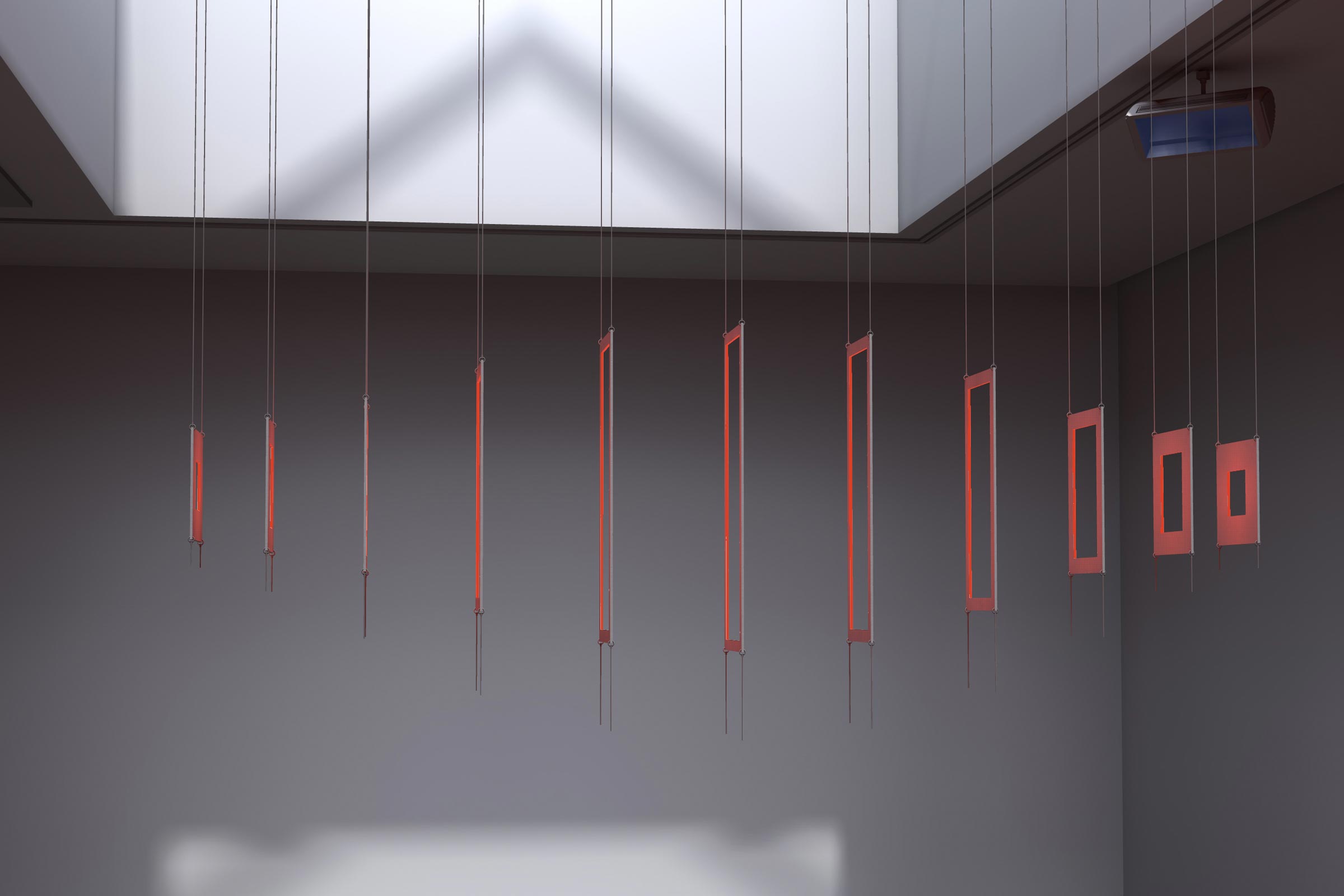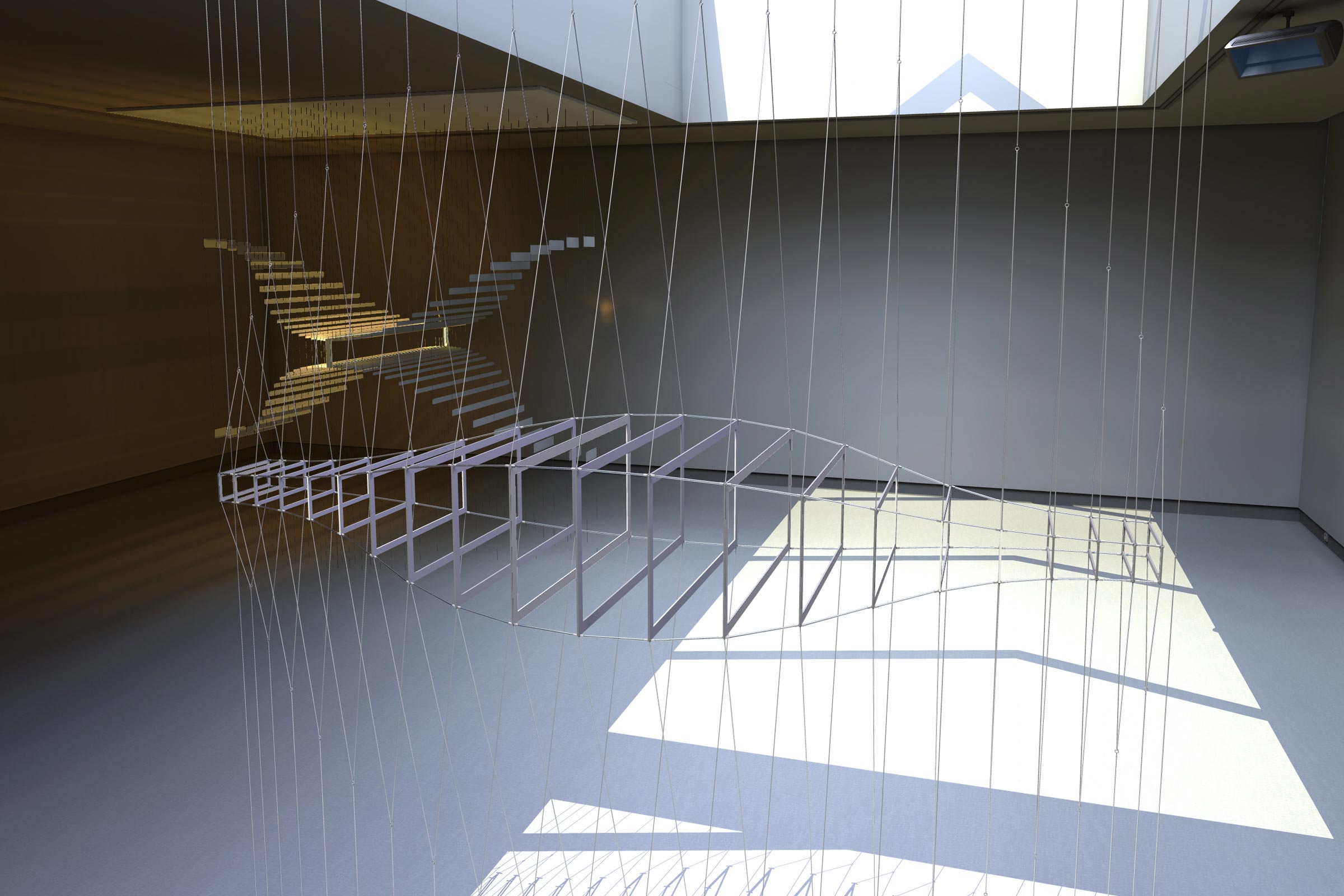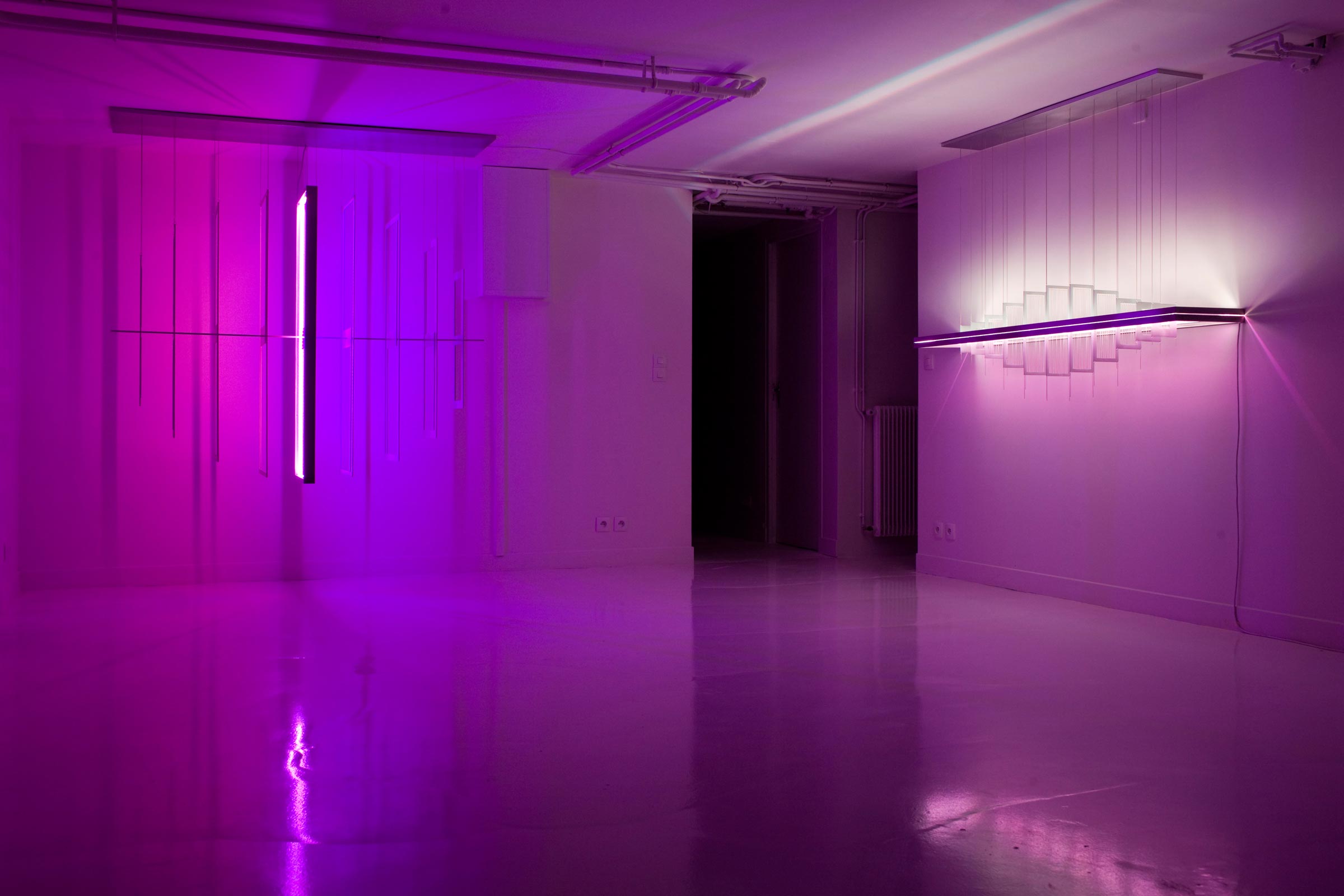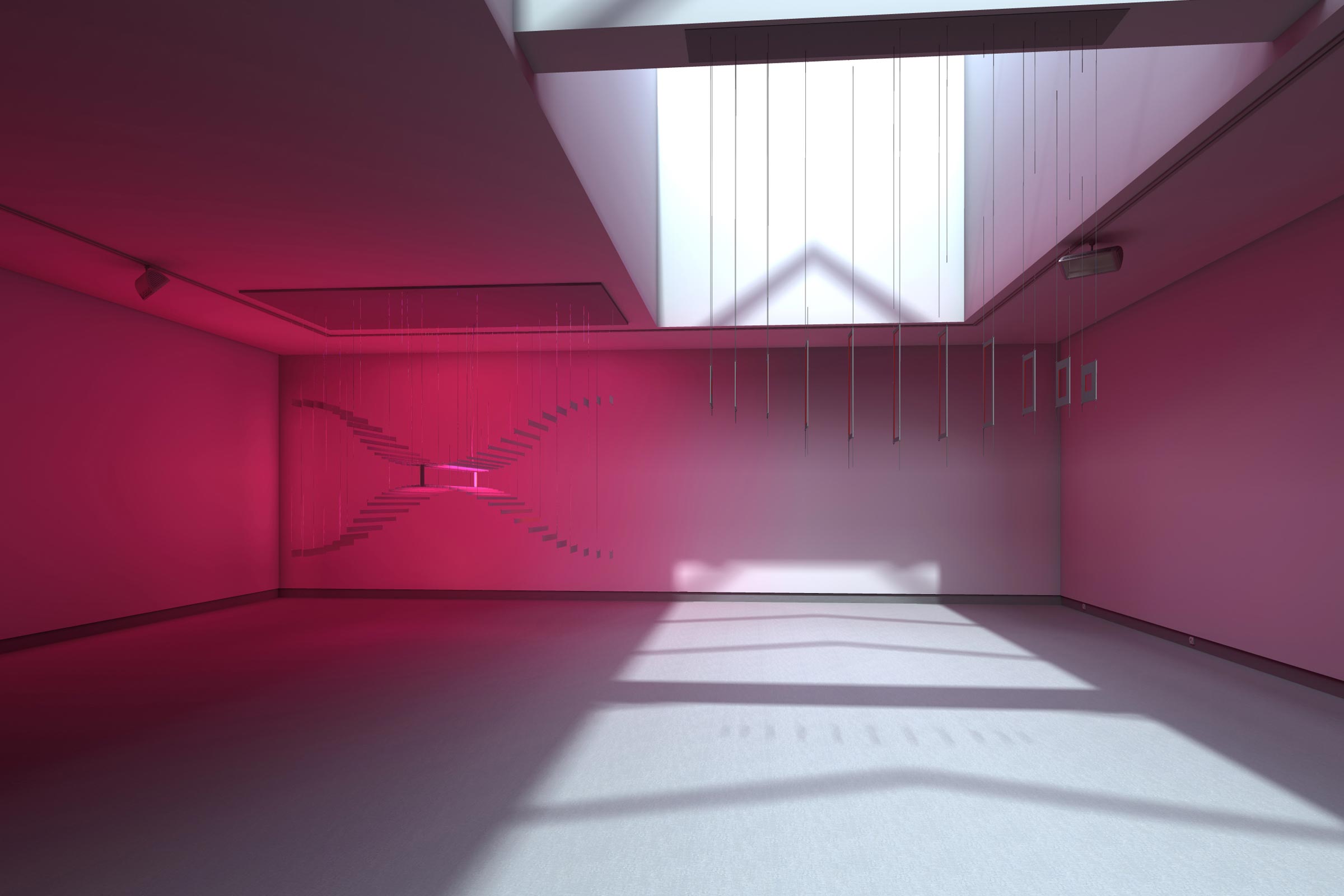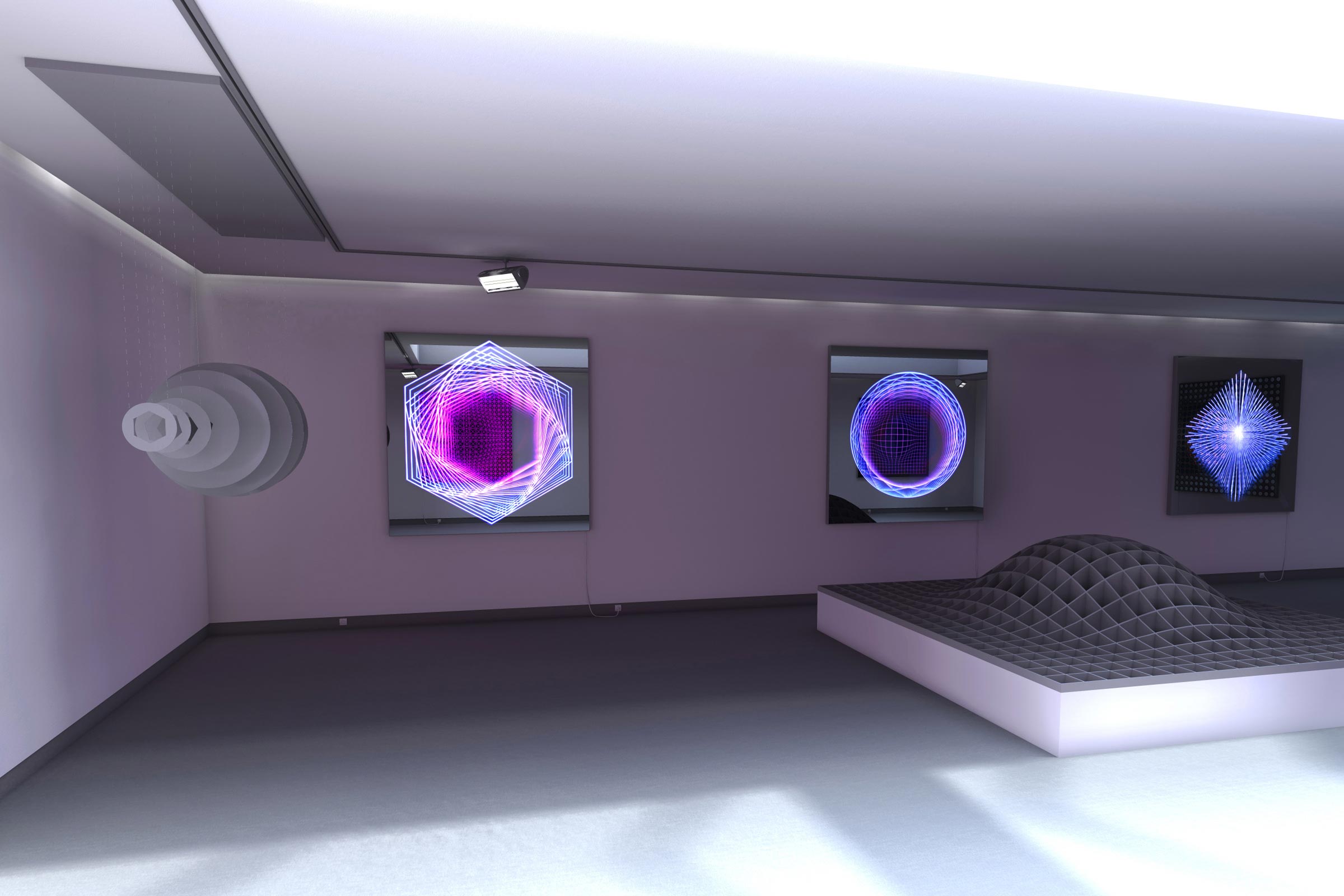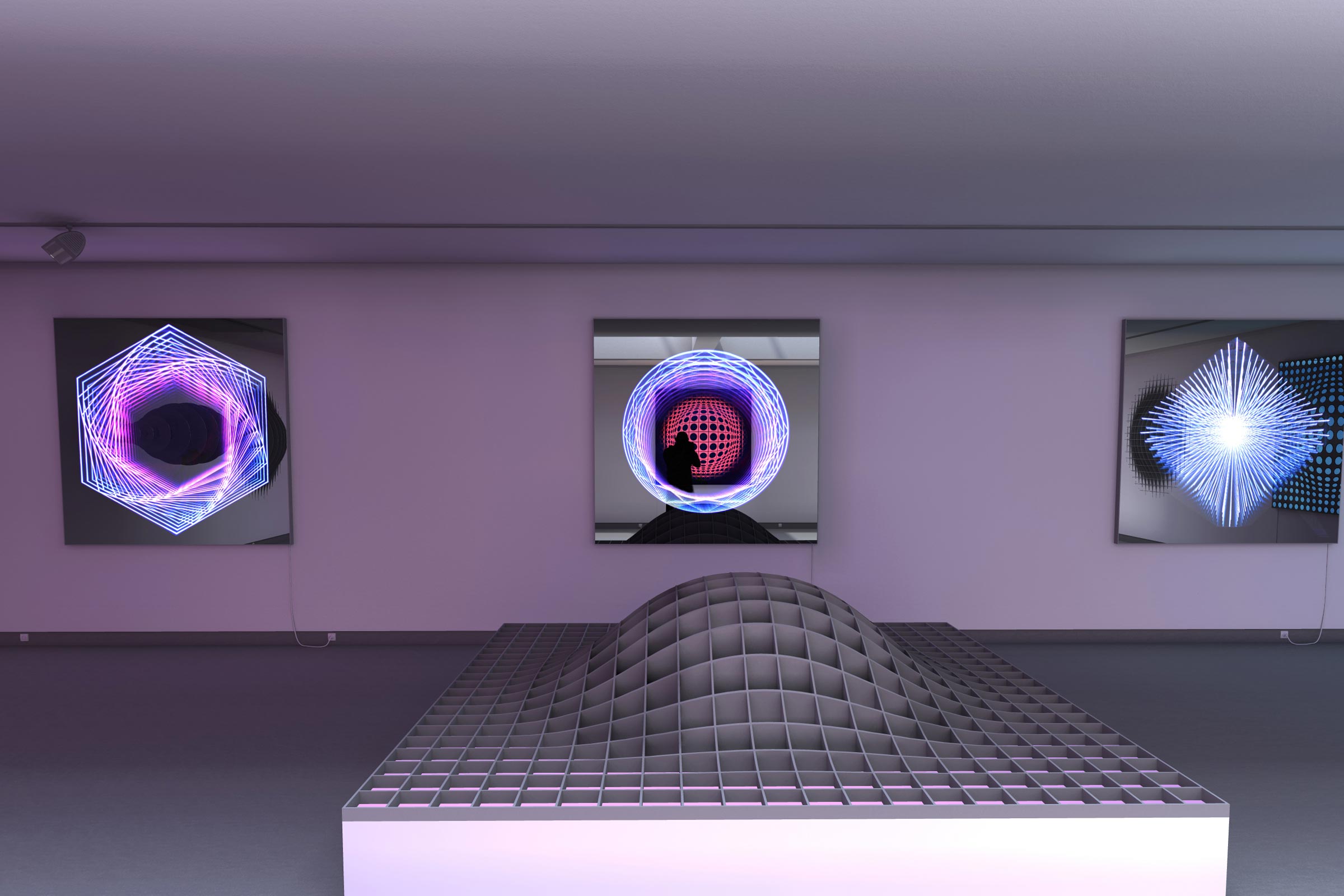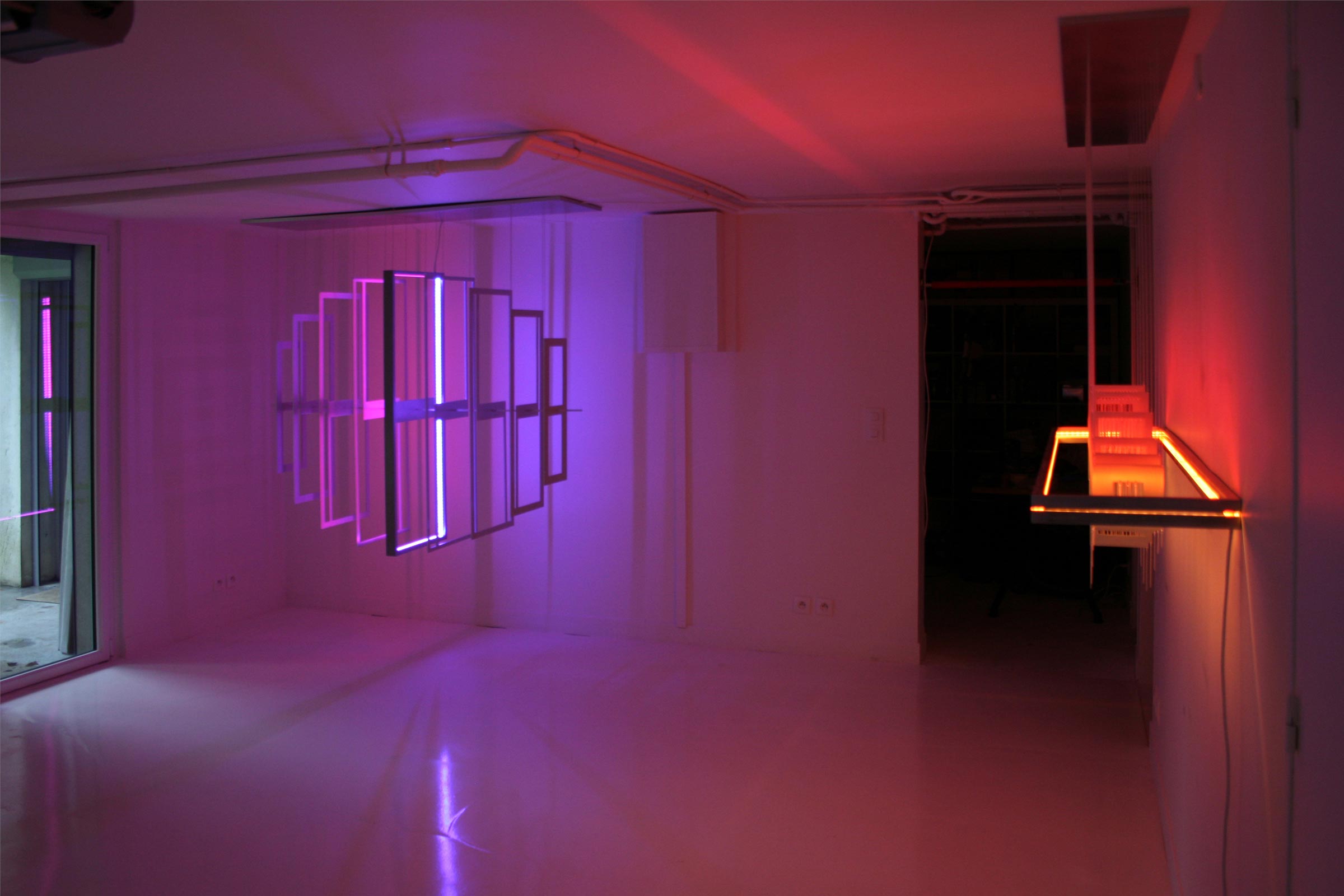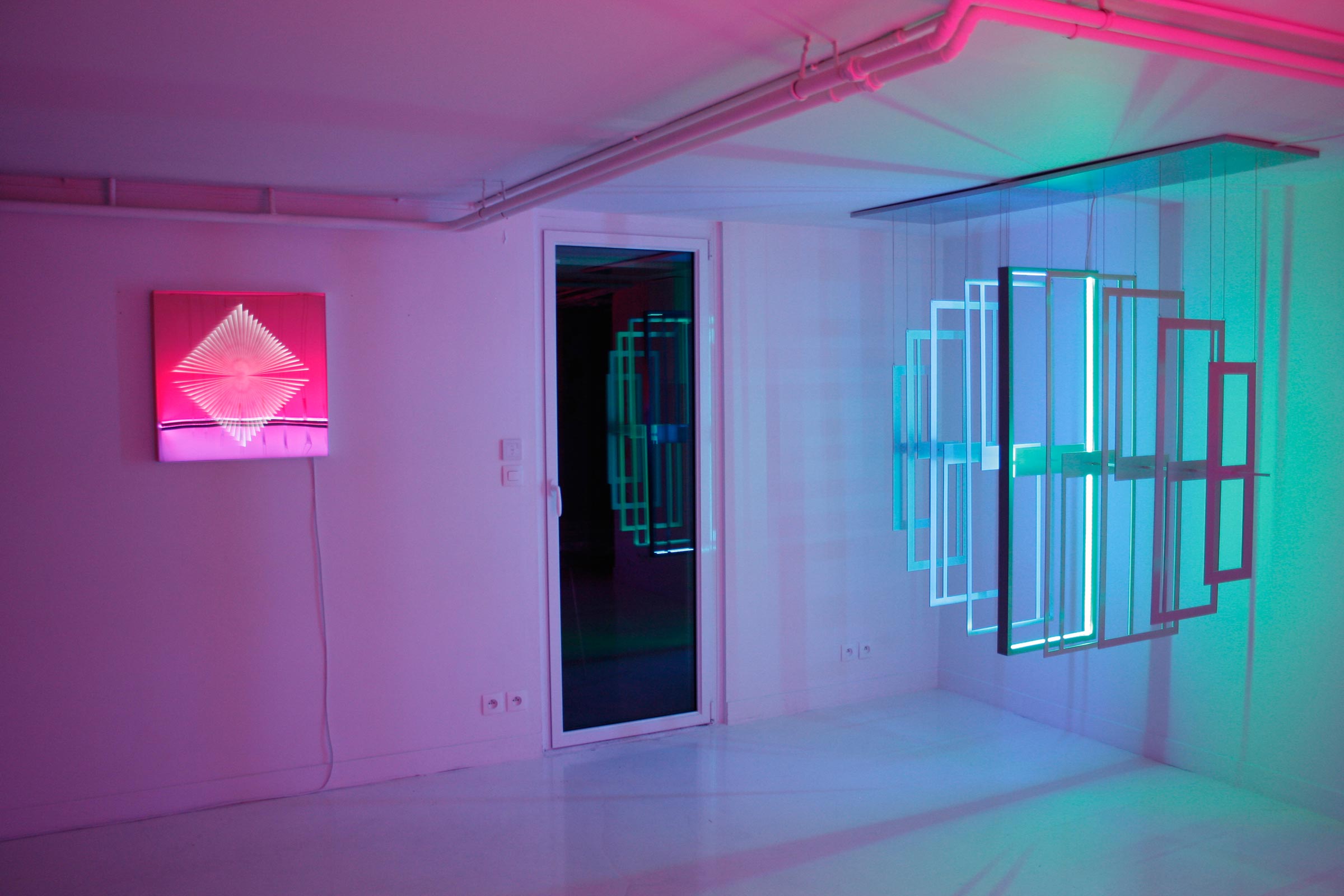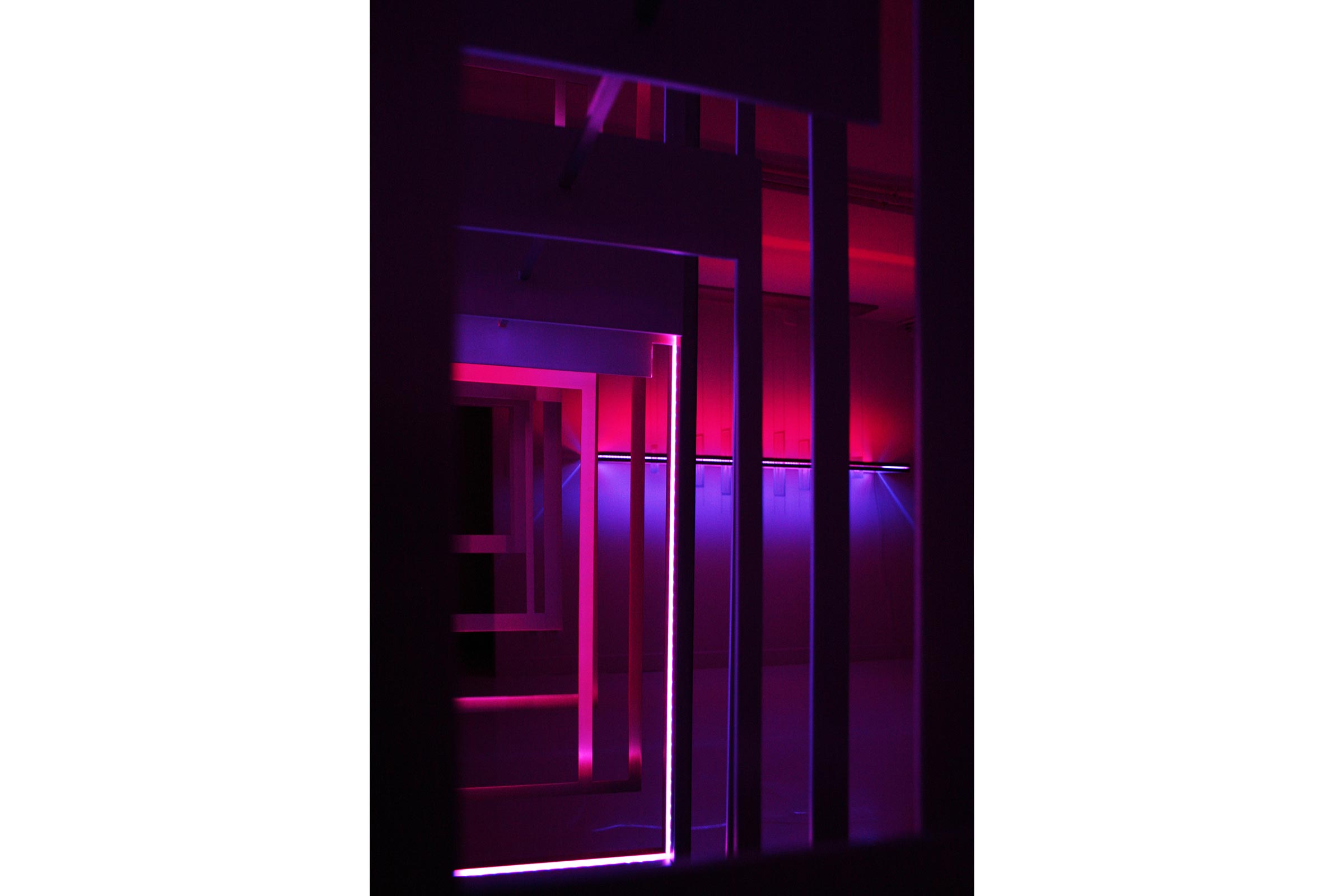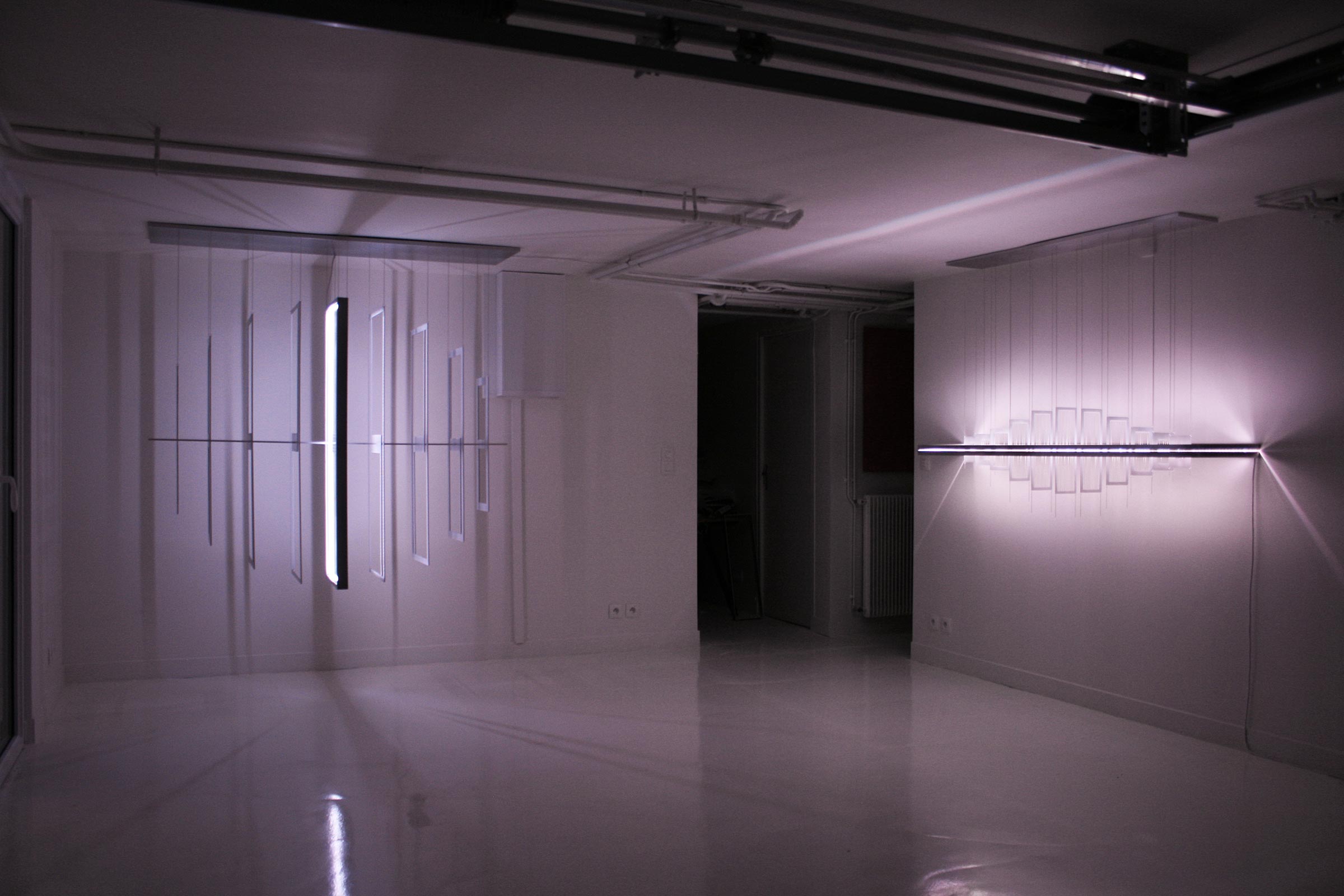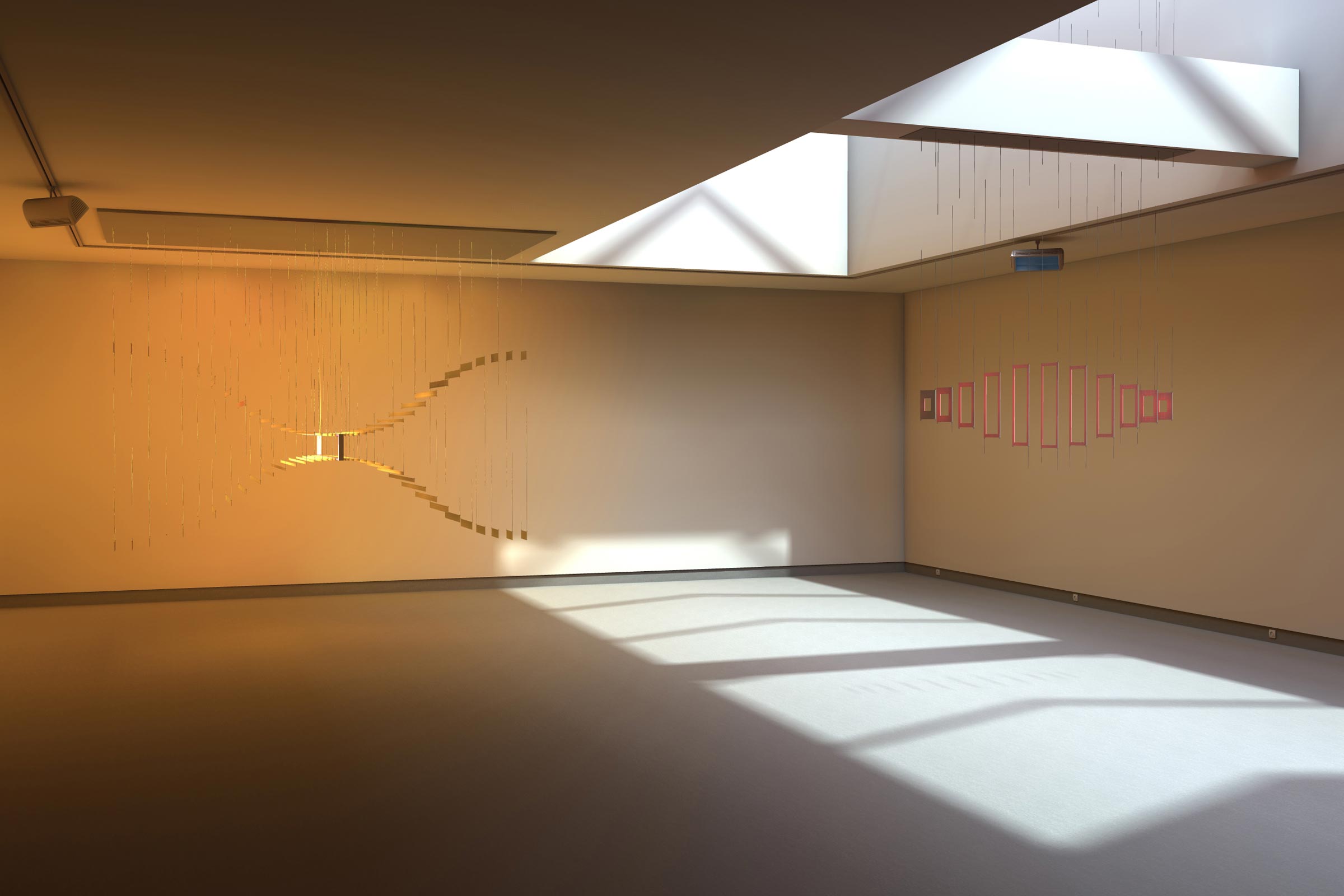Propagations were the first collaboration projects of installations between Bardula and her alter ego. They were shown in 2013 to Frédéric Chambre, director of the Piasa auction house in Paris, curator of the Baccarat Hotel New York collection, and the one who introduced Bardula to Parisian interior designers Gilles & Boissier, subsequently leading to the Harcourt Vitrines project and later to the kinetic light installations for Moncler.
The focus of Propagations is the mathematical progressions of sequenced shapes. The movements depicted represent the wave-like nature of light. These installations reveal different volumes depending on perspective and colour; they can be said to be kinetic by virtue of the fact that a holistic view is needed to comprehend them. The varying colour of LEDs, enhanced by their reflection in the metal, affects the viewer’s perception of the entire surrounding space and forms a synergy between shape and light.
This series also study volumes in the form of perspectives and optical illusions. Still lifes of virtual 3D volumes and spiral constructions drawings bring out the sensation of space.
The 2D medium interacts with the light which is subjected to alteration while going through the translucent material holding the drawing.
The way we deal with space refers us back to our relationship with it through the senses we use in our environment. They question our positioning, geographical as well as metaphysical, on the notion of tangible and real and their representations.
Matter, and what is meant by the existence of perceptible Matter, is also part of this topic: Matter as our senses and intellect perceive it is possessed of no more than a temporary and relative reality; in so many million (light) years, it will have undergone a full transformation. There is nothing in the world but curved empty space.
The works study the relative and ephemeral existence of Matter, stemming itself from the Original light, by using a geological component subjected to the physical contingencies of our own space-time: metal.
The narrative thread begins with an imaginary point, splitting in two and together forming a straight line: the first dimension. The two-dimensional image produced by the intersection of lines itself intersects with another image and other lines to create a three-dimensional volumetric structure that becomes visible by moving around it.
The successive development of each of the three dimensions lead inevitably to the fourth dimension, time, highlighting the resurgence of forms regardless of time and place.
The spiral of an aluminium shaving used to make part of an installation is identical to one resulting from stellar turbulence or the effect of gravity on water.
The narrative structure that unfolds prompts in us an awareness of space-time.
The movement and form of Matter, i.e. the organisation of particles within a system, are universal. Mathematically, we find that the spiral of the shell fits the golden ratio and that its perfect proportions are constructed on the basis of a large golden rectangle. If we remove the large square from the large golden rectangle, we are left with a smaller golden rectangle. This process can be repeated an infinite number of times. It will never end, because the length and width of a golden rectangle are incommensurable (you cannot measure one using the other as a unit).
Geometry and philosophy are inseparable and are reflected in the thread and labyrinth formed through the arrangement of voids and solids, matter and space drawing the eye into an optical illusion.
Spatial topology and the contours of these arrangements do not come down to iconography in the traditional sense of the term, but show how this system works according to its own laws of construction: the volumes it creates, the spaces it organises or shapes and the contrasts, rhythms and individual tensions it produces.
In exploring the techniques necessary to create these installations, have been developed an approach of assembly by magnetisation, embodying a theme of polar opposites, positive and negative charges, attraction and duality.
The sanding motion of the metal to lend it volume and light reproduce the molecular patterns of matter: orthogonally and geometrically, comparable to the way in which electrons move within a magnetic field; at will with randomness, reflecting the entropy of systems.
From these elementary particles and their natural tendency to chaos, ordered and organized new structures will emerge.
Propagations extend from Spacetime.
Spacetime was matter at a given moment; Propagations is what happens an instant later.
What exists between these two points in time is movement. That of matter, which carries a kinetic energy in its motion, and that of light, travelling in waves.
Space expands, time passes, energy materialises. The void shatters into light, which generates matter.
Light, a manifestation of electromagnetic quantum force, a wave associated with particles. Energy exchanged between matter and light through the duality of its nature, corpuscular and undulatory.
Collision of matter, the origin of motion. Elementary interaction of masses by the fundamental force of gravity.
Propagation of a distortion, revealing an undulatory movement through the progressive interaction of void and matter.
Thread tension created by gravitational and magnetic force. Triangulation of the circle, sphere segments produced during quadrature. Kinetic geometry.
